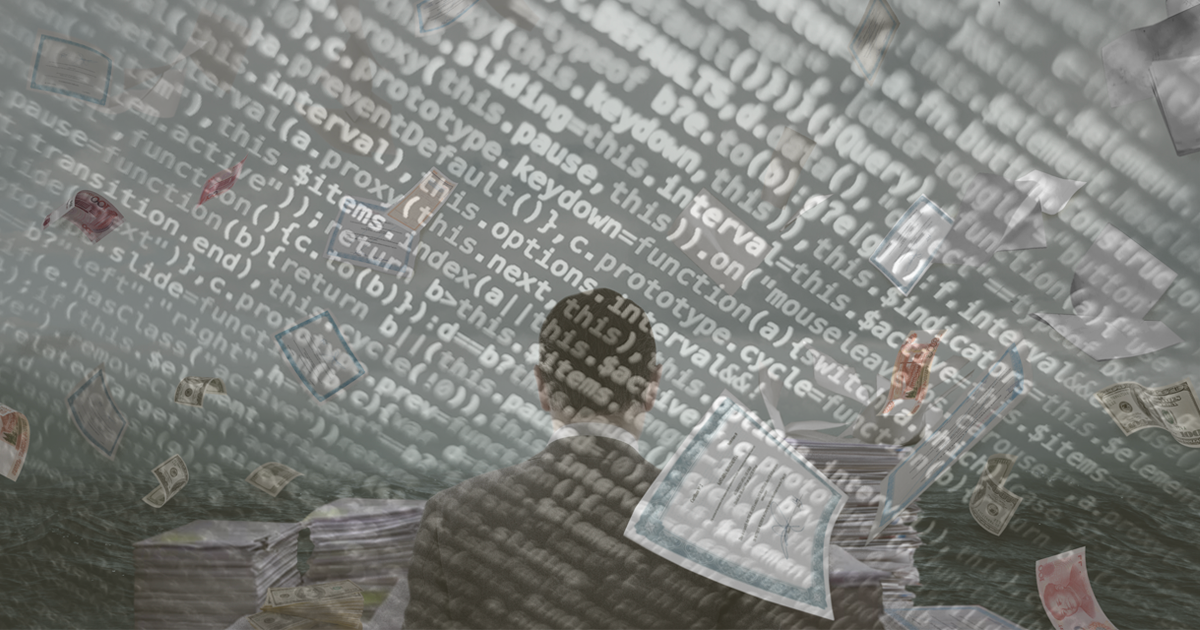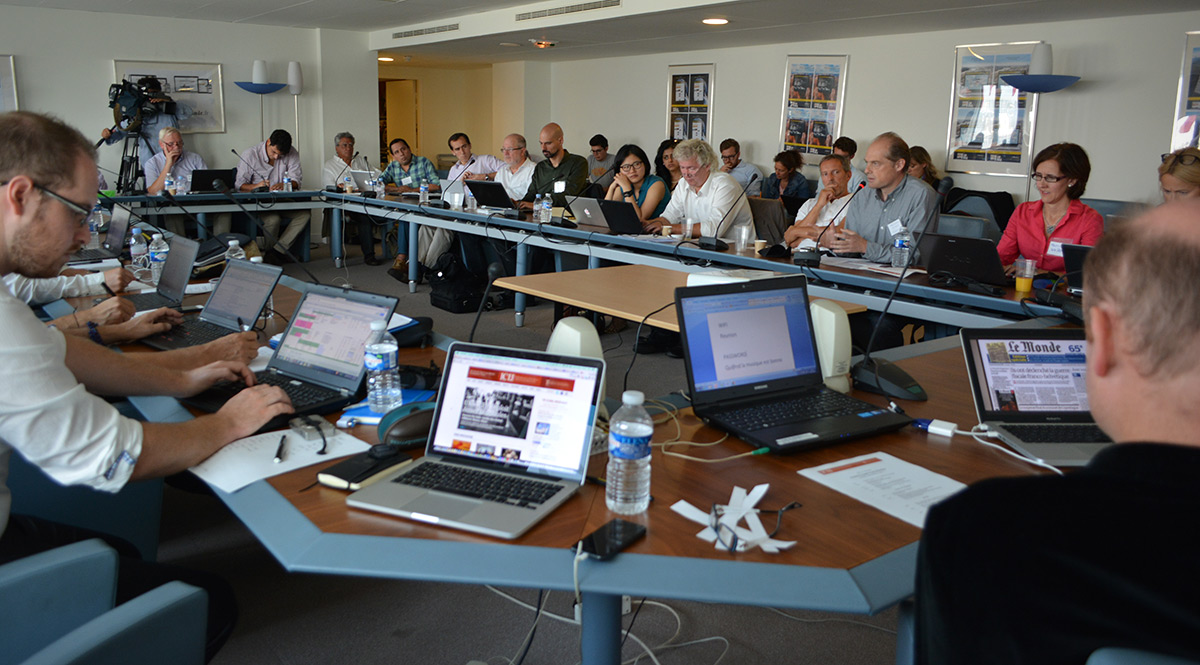“A dance class in how we become the worst dancer possible.” The description of this Stanford offering caught my eye. “As a class, we purposely explore chaos, failure, and ‘bad’ dancing, with the hope that then we will have a greater chance to understand and refine our personal notions around beauty.”
I spent a good chunk of my childhood trying to become a good ballet dancer. To fit that ideal of the ethereal ballerina, to master those wicked turns and leaps. As an adult, Argentine tango, another highly prescriptive dance with crystal-clear notions of good and bad, became a new goal and obsession.

And here I was, some years later, enrolled in a class called Hot Mess where the goal was to ‘unlearn’ those ideas of beauty and good dancing and explore what can happen when we allow ourselves to be lost.
As we ran across the studio improvising moves or sounds or infusing our ‘dancing’ with phrases that made no sense (birds! ice-cream! shrimp!), it became clear to me that there were two well-defined groups of students in the class: those who were having the time of their lives; and those like me who were excruciatingly trying to unlearn decades of “proper” dancing.
On my bike ride home after class, I started to draw parallels between my experience at the dance studio and journalism. Our profession, too, is in the midst of a great deal of chaos, transformation and promise. There are forces at work — economic, technological, political — whose course we can hardly predict or control. And then there’s us, journalists, reinventing our profession and the business models that might sustain it into the future, experimenting, distinguishing shining objects from those with true value, acknowledging that we need others — different perspectives, experiences and skills — to build something that lasts.
There is so much to be hopeful for.
Earlier this year, I helped judge the AI and the News Open Challenge, which funded creative ideas at the intersection of artificial intelligence and the news. I was impressed with the inventiveness of many of the more than 500 projects submitted. In the U.S. and worldwide, the nonprofit news space continues to grow, with charity and community-supported newsrooms popping up at a fast pace in response to shrinking media freedoms and expanding news deserts. Collaboration powered by data and technology has forever changed the way investigative journalists work, creating opportunities for impact at a scale never seen before.
It’s a time of destabilization, learning, fear and opportunity in journalism.
Yet, how are we journalists tackling it to make sure our organizations last well into the future? What assumptions and mindsets are we bringing to these new journalism spaces?
Here’s my take on five ideas we need to unlearn as an industry if we want to seize the potential of our own hot mess moment:
1. Our job is just to tell the story
It’s more complicated than that.
We need to be intentional about the impact of our stories. In other words, be clear about why we are doing what we are doing and what needs to change in the world as a result of our journalism. This mindset has big implications for story selection, for the way we report our stories (collaborating with other newsrooms every time it makes sense and with the communities we serve always) and for the resources we invest to stay with a story over time.
At the International Consortium of Investigative Journalists, we are still tracking the money governments around the world are recovering as a result of the Panama Papers ($1.28 billion so far is the conservative estimate) and continue to report about the developments of investigations we did six years ago, such as Offshore Leaks, which recently sparked multiple bank raids in Germany.
Along the way, we have presented our findings in parliaments, met with high-school students to talk about the inequities caused by tax havens, and published an interactive database of offshore companies that allows citizens to do their own exploration of the data that underpins our work. When one of our colleagues was murdered in Malta, many of our partners joined forces to continue her work.
2. Culture scales automatically
Silicon Valley, where I have spent a year as a John S. Knight Journalism Fellow, is full of horror stories of startups that imploded as they grew fast and lost their values and identity along the way.
Curt Coffman and Kathie Sorensen, authors of “Culture Eats Strategy for Lunch,” argue that culture “is not the enemy of strategy and performance but an equal player in the game” and an essential competitive advantage. “Our competition can copy our products, methods, and service, they can hire our stars, duplicate our marketing, use our vendors, lure our customers with amazing offers, but they can’t clone the culture that created those advantages.”
As our journalism startups grow and get more attention and funding, let’s remember the foundational days — the energy, the focus, the sense of mission — and let’s see that our core values are lived out every day in our newsrooms. No tech, cool innovation or branding can make up for a mediocre culture. Sooner or later, that bad culture will catch up with your strategy and crash it.
3. Journalism is an unhealthy profession
How we take care of our people is exhibit one of the culture of any organization.
In my job leading global investigations, I come across an ever-larger number of journalists who tell me, quietly, how physically and mentally exhausted they or their colleagues are. It’s not just the daunting events they witness in their reporting, the physical and online harassment they face routinely or the debilitating lawsuits they battle. Now it is also the worry about the stability of their jobs; the pressure to raise funds to support their work and the work of the people they lead; the apparent inescapable reality of having to play multiple roles in journalism startups or in decimated local news outlets.
The good news is that journalism-induced burnout has become less of the taboo than it was, and more journalists are talking candidly about their experiences.
“I am tired. I can’t continue doing investigations and raising money. It’s not humane,” said Mónica González, one of Latin America’s leading investigative editors, in a recent interview as she stepped down from Ciper, the nonprofit investigative news outlet she founded 12 years ago.
Unlike Monica, many other journalists would not know or admit that they, too, are at the end of their rope, as they model unhealthy behaviors to younger generations of reporters. Studies have shown that female journalists are burning out at higher rates than men.
Journalism leaders, board members, funders, schools and professional associations need to take on newsroom burnout head-on before it consumes our newsrooms and our business.
4. We must adopt/develop/fund the latest shining tech tool
“What kind of world do we want to live in and how can technology serve it, rather than drive it?” asked NYU professor Kate Crawford, one of the leading thinkers on the social implications of artificial intelligence, at a recent Stanford event.
We can easily extrapolate that question to journalism. We grapple with it a lot in the field I know best, investigative reporting, where dozens of tools have been funded and developed, but only a few have scaled and made a difference, with Document Cloud being one of those successful examples.
Not long ago, a group of journalists and technologists met to discuss the creation of an all-encompassing “super tool” for investigative journalists that would rival those used by the intelligence community. The project had a price tag of nearly $20 million, which has not been, and likely will not be, raised any time soon. To complicate things more, big tech companies and platforms are stepping in and offering journalists their own tools as well as training and funding.
Perhaps a more reasonable strategy, following Crawford’s logic, is for journalists to take a step back from all the confusion and the panic and ask ourselves what problems we are trying to solve with technology, what “pain points” in the reporting process we believe technology can help us address and what tools already exist out there that we can adapt for our own purposes without compromising our data or our independence. During my year at Stanford, I have studied how newsrooms can effectively partner with academia to use machine learning techniques in big data investigations.
5. We can do this on our own!
In this area, we have come a long way since the days when investigative reporting was largely a lone-wolf affair. Working together across newsrooms and borders journalists have reported stories that toppled governments, exposed corruption on a grand scale, prompted regulators to ban harmful products and continued the investigations of their jailed colleagues. Residual reluctance to collaborate with others remains in pockets of the media, most notably in the United States. One can only wonder what the impact of certain stories such as the crisis on the U.S. southern border, Trump’s business deals around the world or the contamination of drinking water in the U.S. would have been had journalists collaborated more deeply with their peers at home and abroad. At the end of the day, it comes down to the impact we want our work to have on society (see point 1!).
Scientists just gave us a powerful example of what happens when we let go of our fear to share our work with others for the sake of something bigger than ourselves. It had been impossible until now to photograph black holes because they are so big and so far away. Scientists would have needed a telescope the size of the Earth. So instead, more than 200 scientists coordinated radio telescopes in different locations around the world to act like one giant telescope. As Seth Fletcher of The New York Times wrote, they had to adjust the telescopes to work together; they had to get the timing right; they had to hope that the weather would cooperate in multiple places. “Oh, and they had to hope nothing broke. It sounded crazy, but it worked.”
The premise for my Hot Mess dance class at Stanford also sounded crazy (“Dancers confront a number of movement and vocal prompts that are literally impossible to execute in any good way”). But it also, to my huge surprise, worked. I saw beautiful, expressive and powerful dancing as classes went by and we let down our guard. A new kind of beauty. Messier, less predictable, more inclusive and more authentic.



